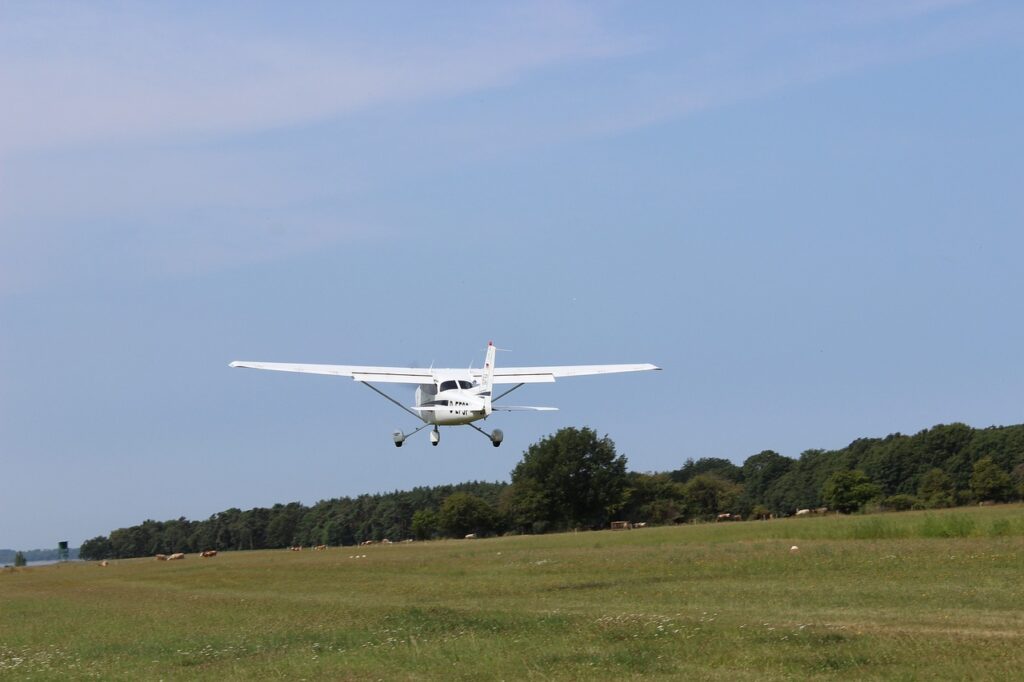
The EPA is in the process of determining how to regulate lead in the fuel used in small planes. (Stock photo courtesy Pixabay)

More than a decade of research led by Colorado State University economists has provided federal officials with the data needed to begin the process of enacting new standards for the use of leaded aircraft gasoline, a policy change that could have major public health benefits for millions of children.
“When we started this work, it was a technical problem of determining whether lead emissions from aircraft caused harm in children residing near general aviation airports,” said Sammy Zahran, the interim chair of the CSU Department of Economics. “As scientists, we don’t typically think about the policy consequences of our work. We’re pleased that our work figured in this decision by the EPA and are hopeful that this decision will make a positive difference for present and future generations.”
The Environmental Protection Agency announced Oct. 18 that it had made a final determination that lead aircraft emissions contribute to air pollution, which means the Federal Aviation Administration must now develop standards to control or eliminate the use of this fuel.
Previous studies have shown that childhood lead exposure can have harmful effects on cognitive function, including reduced IQ, decreased academic performance and the potential for additional health concerns.
“Advocacy groups pressured the EPA to find endangerment from exposure to lead emissions at airports, but the agency had been holding off, waiting for additional studies to differentiate aircraft lead emissions from other sources of lead exposure,” Zahran said.
The research by CSU economists did just that.
Because homes near airports tend to be older, Zahran’s team — including fellow CSU economists Terry Iverson and Stephan Weiler — needed to find data that showed lead exposure was from nearby aircraft rather than paint or other nearby sources of lead exposure.
They used 10 years of blood test results obtained from millions of children in Michigan and found that samples taken closer to municipal airports had higher levels of lead. Additional data showed that children downwind of small airports had higher lead levels than children who lived in the same proximity but upwind, and that lead exposure was higher during higher traffic periods at surrounding airports. The research also showed that the blood lead levels of children near airports decreased substantially in the period following the tragic events of Sept. 11, 2001, when aircraft traffic was at a near halt.
“The ensemble of evidence amassed in the paper showed more definitively that the deposition of lead coming from aircraft independently caused harm – something that hadn’t been demonstrated before,” Zahran said.
This research began in 2012, and when the findings were published in 2017, Zahran said the work didn’t receive much attention outside of academic circles – until someone in California contacted him in 2019 and asked him to conduct a similar study in Santa Clara County at Reid-Hillview Airport.
The resulting paper was published in 2022 in PNAS Nexus and garnered national media coverage, including an investigation by Quartz Magazine. Congress later heard testimony about the dangers of this lead-formulated fuel, and now equipped with two peer-reviewed studies detailing the health risks to children living near municipal airports, the EPA launched its own endangerment finding process in 2022, resulting in the latest ruling.
“An important dimension of the research is that neighborhoods near generation aviation airports tend to be economically disadvantaged and communities of color, implicating ethical questions of environmental injustice,” Zahran said. “I think there are immense cognitive and health benefits that await all future generations of children in the transition to an unleaded gas alternative. We commend the EPA’s ruling in enabling this transition.”